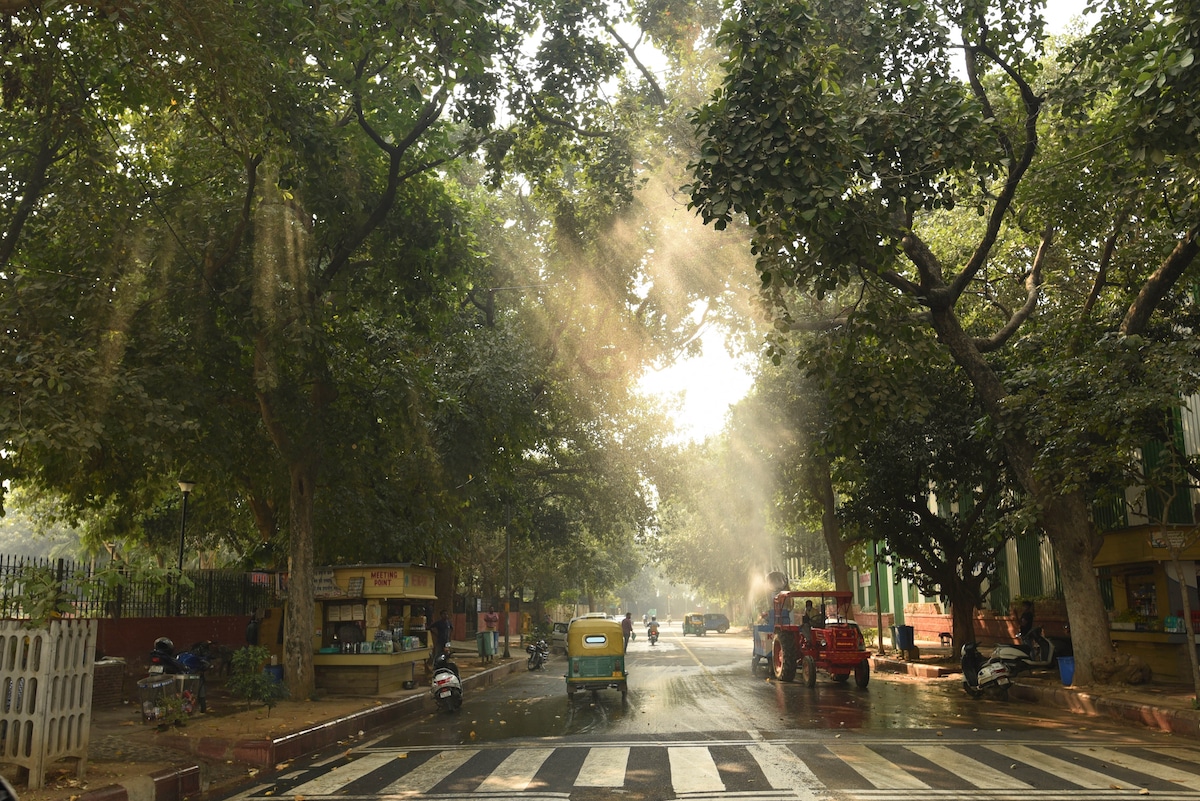Urban Trees Can Be a Climate Solution, but Most Globally Are Now at Risk

 Why you can trust us
Why you can trust us
Founded in 2005 as an Ohio-based environmental newspaper, EcoWatch is a digital platform dedicated to publishing quality, science-based content on environmental issues, causes, and solutions.
Planting trees in cities is often touted as a climate solution that can at once absorb carbon dioxide from the atmosphere and keep urban areas cool during increasing heat waves. But it turns out these trees are at risk from the climate crisis as well.
A new study published in Nature Climate Change Monday found that more than half of urban tree species are already in jeopardy and this will only increase in the next 25 years if nothing is done.
“Without action, two-thirds of trees and shrubs in cities worldwide will be at potential risk from climate change,” study authors Rachael Gallagher, Manuel Esperon-Rodriguez and Mark G. Tjoelker of Western Sydney University; Jaana Dielenberg of Charles Darwin University; and Jonathan Lenoir of Université de Picardie Jules Verne wrote in The Conversation.
The trees planted in cities — in yards, parking strips and parks — have come to be known as the urban forest. Its benefits are increasingly being touted by governments and environmental organizations around the world. The U.S. Forest Service, for example, notes that urban trees store carbon dioxide, keep cities cool, reduce air and water pollution and boost mental health and community well-being. Despite their popularity, little was known about how the climate crisis was already impacting urban trees, according to the study authors. So an Australia-and France-based research team set out to find out.
The researchers turned to the Global Urban Tree Inventory, according to BBC News. This database lists more than 4,000 trees and shrubs growing in 164 cities in 78 countries. They looked at 3,129 different species, assessing their temperature and water needs and to what degree these were already being strained by the climate crisis and would be further strained by 2050, according to the French National Center for Scientific Research. They found that 56 to 65 percent of species were already experiencing temperature highs and drought conditions outside their ideal range and 68 to 76 percent could face such conditions by 2050. Geographically, trees were especially at risk in cities near the equator like New Delhi and Singapore, according to the study. Urban trees in all of India, Niger, Nigeria and Togo were also threatened, BBC News pointed out.
The more than 1,000 species already at risk included oaks, pines, maples, cherry plums, chestnuts, elms, lindens, wattles, eucalyptus and poplars, the study authors wrote in The Conversation.
“Even more worryingly, the number of species affected, and the scale of the impacts, will increase markedly by 2050 as temperatures increase. These trends jeopardise the health and longevity of urban forests and the benefits they provide to society,” the study authors wrote.
For example, trees are said to act as natural air conditioners, but, when they get too much heat or not enough water, they can actually lose their leaves or stop releasing water vapor, which reduces their cooling effect.
The study authors did say there were things that city planners could do to protect their urban forests. They can look at the study results to see which trees might be at risk and need extra protections and which trees might be resilient in the future and be good candidates for planting today. They can take steps to ensure rainfall is making it into the ground where the trees can access it, keep existing trees standing and plant new ones. They also shouldn’t delay these plantings, since trees need time to grow into their full capacity as carbon storers, air coolers and shade-bringers, Esperon-Rodriguez told BBC News.
“All these benefits are mainly provided by big mature trees so we need to make sure that what we are planting today will get to that stage where they can provide all those benefits for future generations,” he said.
Subscribe to get exclusive updates in our daily newsletter!
By signing up, you agree to the Terms of Use and Privacy Policy & to receive electronic communications from EcoWatch Media Group, which may include marketing promotions, advertisements and sponsored content.

 233k
233k  41k
41k  Subscribe
Subscribe 




